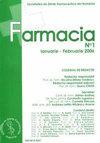OPTIMIZING MILK PRODUCTION, QUALITY AND SAFETY THROUGH ESSENTIAL OIL APPLICATIONS
IF 1.4
4区 医学
Q4 PHARMACOLOGY & PHARMACY
引用次数: 0
Abstract
This study comprehensively explores the integration of essential oils (EOs) into dairy livestock nutrition and milk production, focusing on optimising various facets of dairy farming. Food safety and biosecurity are paramount when introducing EOs into dairy farming practices. Rigorous safety assessments, including toxicity, allergenicity and potential adverse effects on animal health, are essential for the welfare of both livestock and consumers. Additionally, managing EO residues is challenging due to their potential impact on dairy product composition. Moreover, the variable effects of EOs on dairy animals` performance add complexity. While EOs show potential for inhibiting oxidative reactions and microbial spoilage, their influence on nutrient utilisation, ruminal fermentation and milk performance varies. Extensive research is required to optimise EO dosage and formulation for consistent performance benefits. Sustainability is a critical concern, requiring the alignment of EO utilisation with sustainable agricultural practices to address environmental and resource constraints. Lastly, consumer perception and acceptance are vital, necessitating transparent communication and an understanding of consumer preferences to maintain trust in dairy products. Addressing these challenges enables the dairy industry to harness the full potential of EOs, ensuring ongoing safety, quality and sustainability in dairy product production. This study provides practical insights and outlines future research directions to advance dairy production, quality and safety. Rezumat通过精油应用优化牛奶生产、质量和安全
本研究全面探讨了将精油(EO)融入奶畜营养和牛奶生产的问题,重点是优化奶牛养殖的各个方面。在奶牛养殖实践中引入 EO 时,食品安全和生物安全至关重要。严格的安全评估,包括毒性、过敏性和对动物健康的潜在不利影响,对牲畜和消费者的福利都至关重要。此外,由于环氧乙烷对乳制品成分的潜在影响,管理环氧乙烷残留物也具有挑战性。此外,环氧乙烷对乳制品动物性能的不同影响也增加了复杂性。虽然环氧乙烷具有抑制氧化反应和微生物腐败的潜力,但其对养分利用、瘤胃发酵和牛奶性能的影响却各不相同。需要进行广泛研究,优化环氧乙烷的用量和配方,以获得一致的性能优势。可持续性是一个关键问题,需要将环氧乙烷的利用与可持续农业实践相结合,以解决环境和资源限制问题。最后,消费者的认知和接受程度至关重要,这就需要透明的沟通和对消费者偏好的了解,以保持对乳制品的信任。应对这些挑战可使乳制品行业充分利用环氧乙烷的潜力,确保乳制品生产的持续安全、质量和可持续性。本研究提供了实用的见解,并概述了未来的研究方向,以促进乳制品的生产、质量和安全。网站地图
本文章由计算机程序翻译,如有差异,请以英文原文为准。
求助全文
约1分钟内获得全文
求助全文
来源期刊

FARMACIA
医学-药学
CiteScore
2.40
自引率
50.00%
发文量
59
审稿时长
6-12 weeks
期刊介绍:
FARMACIA publishes original research papers, invited topical reviews and editorial commentaries and news, with emphasis on conceptual novelty and scientific quality. Main research areas are focused on: pharmacology, toxicology, medicinal chemistry, biopharmacy, drug design, drug delivery, personalized medicine, nanostructures, nutraceuticals, biochemistry and biotechnology. Manuscripts submitted to the Journal are only accepted after the peer review precess. The papers should have not been published in any other journal. The recommendations of the Declaration of Helsinki, for humans, and the International guidelines as accepted principles for the use of experimental animals should be followed.
 求助内容:
求助内容: 应助结果提醒方式:
应助结果提醒方式:


